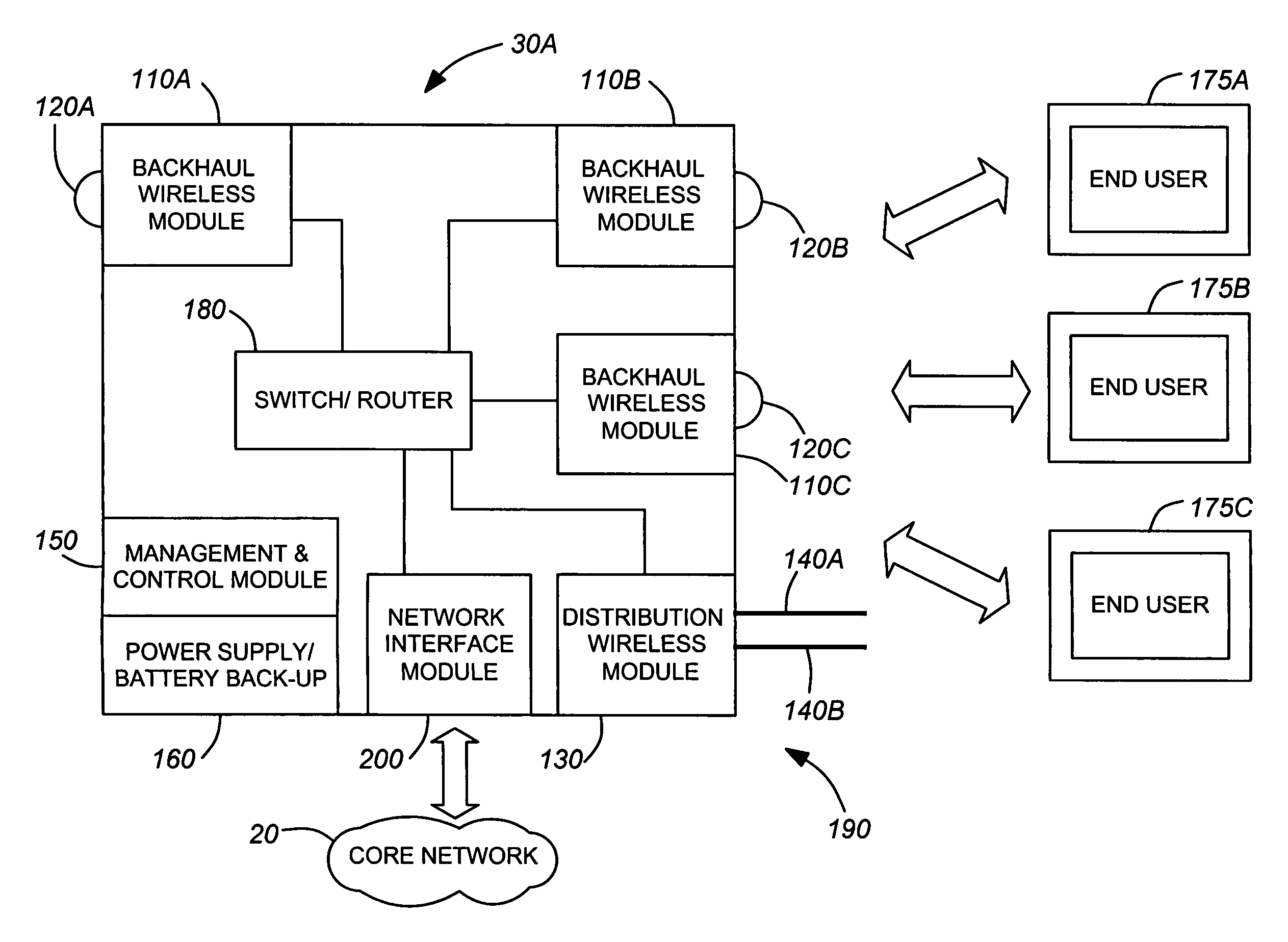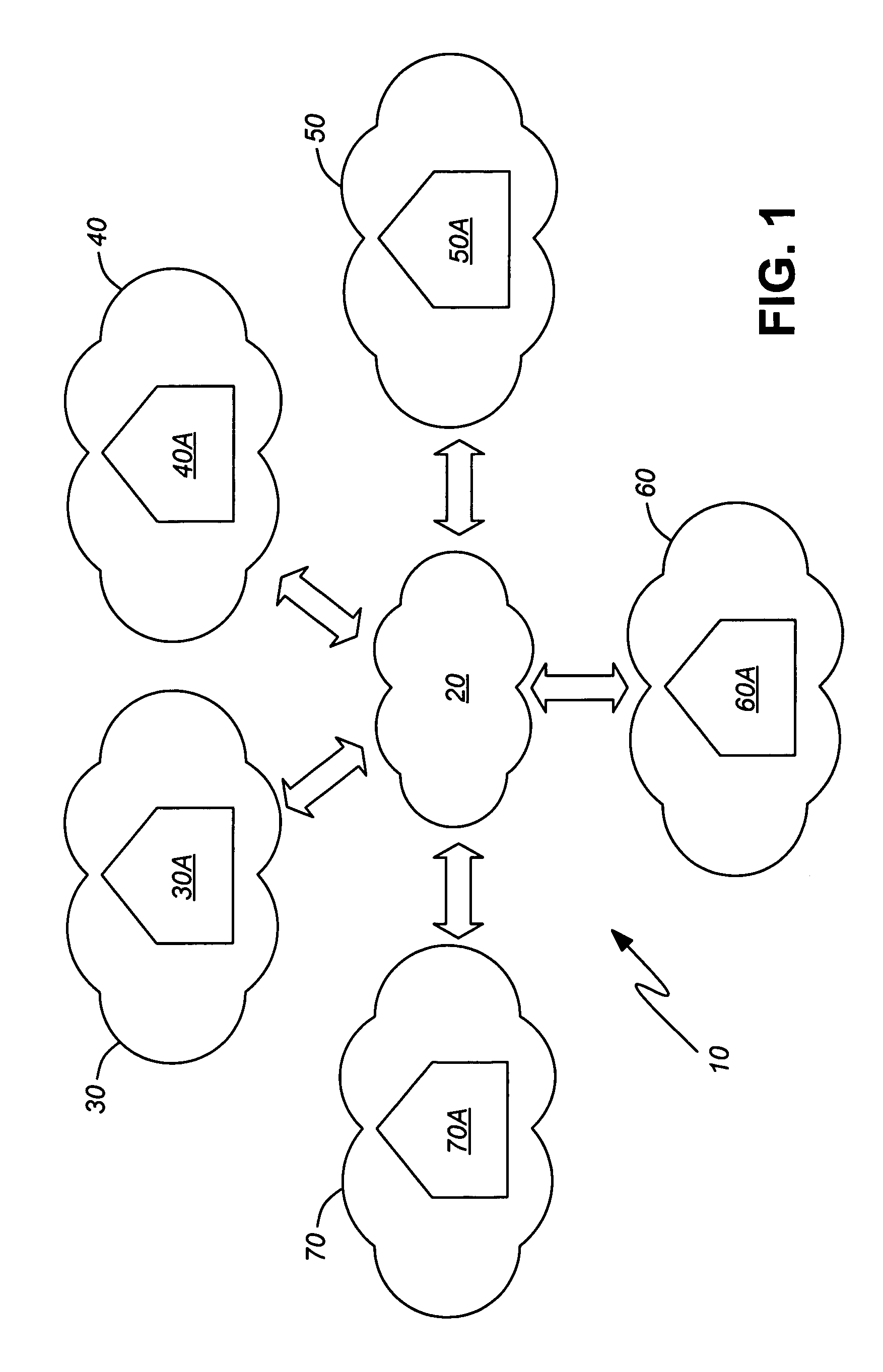Integrated wireless distribution and mesh backhaul networks
a wireless distribution and mesh technology, applied in the field of wireless communications, can solve the problems of large burden on the backhaul network feeding the cell size of the area serviced by the localized wireless nodes, and the network is backhaul data transmission
- Summary
- Abstract
- Description
- Claims
- Application Information
AI Technical Summary
Benefits of technology
Problems solved by technology
Method used
Image
Examples
Embodiment Construction
[0052]Referring to FIG. 1, a block diagram of a large network 10 is illustrated. The network 10 consists of a core network 20 and wireless networks 30, 40, 50, 60, 70, each of which has a network aggregation node 30A, 40A, 50A, 60A, 70A. The core network 20 may be a public and / or private, voice and / or data network. Each wireless network covers a specific geographic region. Each network aggregation node 30A–70A directly connects to the core network 20 by conventional means such as copper wire, fiber optic cable or microwave radio transmission. Each network aggregation node 30A–70A then distributes data from the large network to end users within the geographic region of the coverage of its wireless network.
[0053]Referring to FIG. 2, a block diagram of the wireless network 30 in FIG. 1 is illustrated. As can be seen, the network aggregation node 30A is connected to a core network as shown previously in FIG. 1. The wireless network 30 consists of a wireless network aggregation node 30A,...
PUM
 Login to View More
Login to View More Abstract
Description
Claims
Application Information
 Login to View More
Login to View More - R&D
- Intellectual Property
- Life Sciences
- Materials
- Tech Scout
- Unparalleled Data Quality
- Higher Quality Content
- 60% Fewer Hallucinations
Browse by: Latest US Patents, China's latest patents, Technical Efficacy Thesaurus, Application Domain, Technology Topic, Popular Technical Reports.
© 2025 PatSnap. All rights reserved.Legal|Privacy policy|Modern Slavery Act Transparency Statement|Sitemap|About US| Contact US: help@patsnap.com



